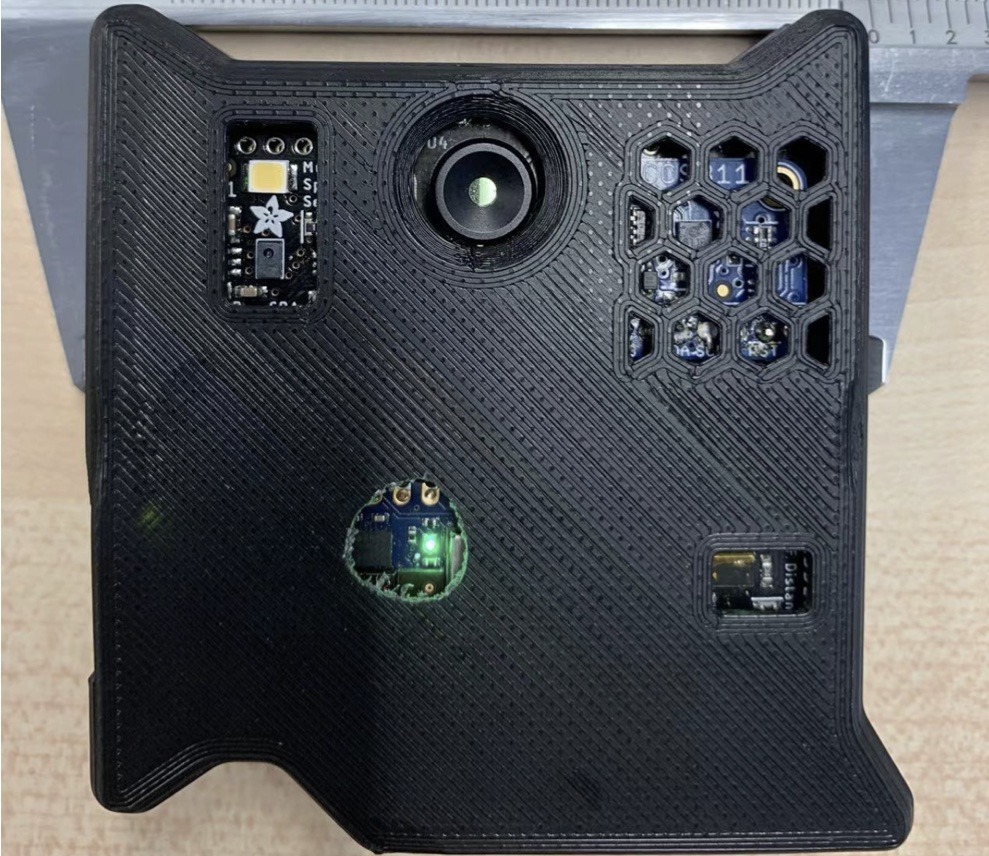The Smart-Badge recognizes kitchen activities thanks to its suite of sensors
The Smart-Badge recognizes kitchen activities thanks to its suite of sensors
Arduino Team — October 11, 2022

We all strive to maintain healthier lifestyles, but the kitchen is often by far the most challenging environment as it contains a wide range of foods and beverages. The Smart-Badge project, created by a team of researchers from the German Research Center for Artificial Intelligence (DFKI), aims to track the number of times we reach for the refrigerator door or drink water using machine learning and a suite of environmental sensors.
The wearable device itself is made up of a single PCB that houses a pair of microcontrollers, an NXP iMXRT1062 for collecting complex data quickly and an Arduino Nano 33 BLE Sense for collecting more basic samples. Whether it's the digital gas sensor, the accelerometer, an IR thermal array, or an atmospheric pressure sensor, each reading is compiled into a single stream that updates at 6Hz and can be stored locally on an SD card or sent via Bluetooth® to a phone.
After asking 10 volunteers to perform various tasks around a fictional kitchen while wearing the Smart-Badge, and then labeling each activity, the researchers were able to collect a massive data set. The total 791 channels of data were fed through multiple layers of a neural network that could ultimately classify activities with 92.4% accuracy.

For more details on the project, you can read the team document here.
Image credit: Liu and Suh et al.

Arduino Team — October 11, 2022

We all strive to maintain healthier lifestyles, but the kitchen is often by far the most challenging environment as it contains a wide range of foods and beverages. The Smart-Badge project, created by a team of researchers from the German Research Center for Artificial Intelligence (DFKI), aims to track the number of times we reach for the refrigerator door or drink water using machine learning and a suite of environmental sensors.
The wearable device itself is made up of a single PCB that houses a pair of microcontrollers, an NXP iMXRT1062 for collecting complex data quickly and an Arduino Nano 33 BLE Sense for collecting more basic samples. Whether it's the digital gas sensor, the accelerometer, an IR thermal array, or an atmospheric pressure sensor, each reading is compiled into a single stream that updates at 6Hz and can be stored locally on an SD card or sent via Bluetooth® to a phone.
After asking 10 volunteers to perform various tasks around a fictional kitchen while wearing the Smart-Badge, and then labeling each activity, the researchers were able to collect a massive data set. The total 791 channels of data were fed through multiple layers of a neural network that could ultimately classify activities with 92.4% accuracy.

For more details on the project, you can read the team document here.
Image credit: Liu and Suh et al.
What's Your Reaction?















![Three of ID's top PR executives quit ad firm Powerhouse [EXCLUSIVE]](https://variety.com/wp-content/uploads/2023/02/ID-PR-Logo.jpg?#)







